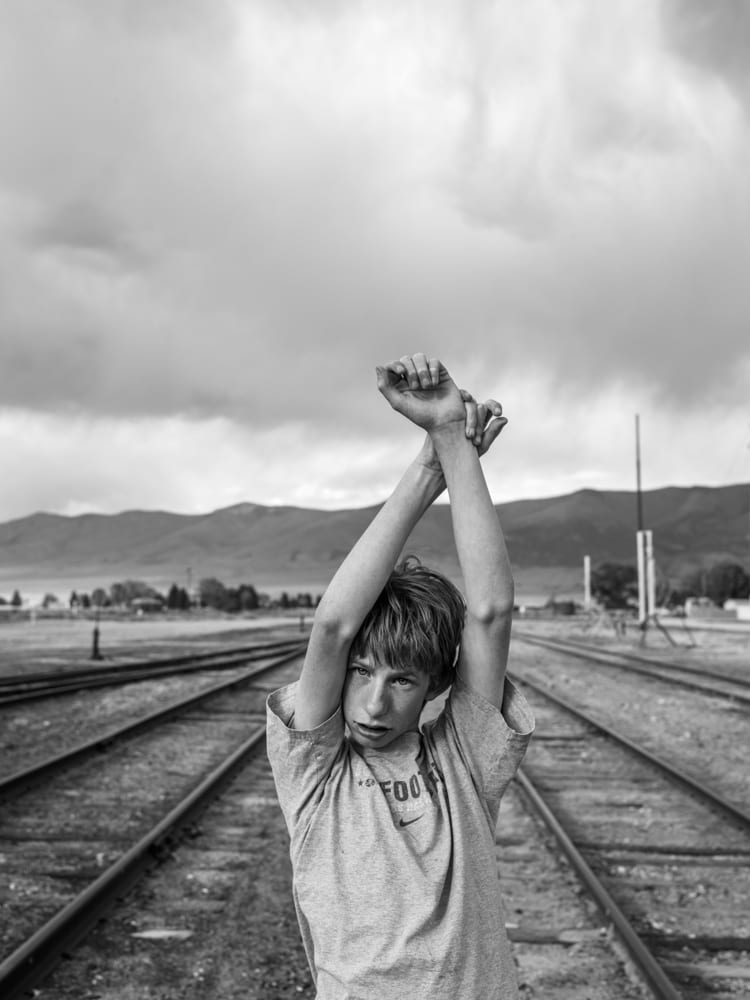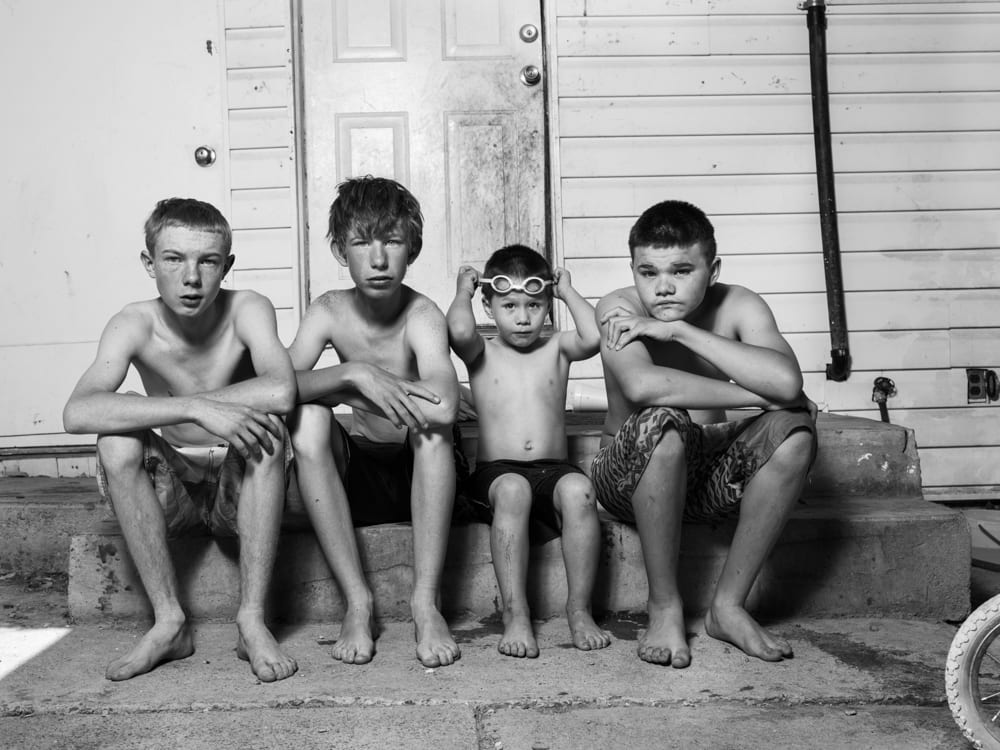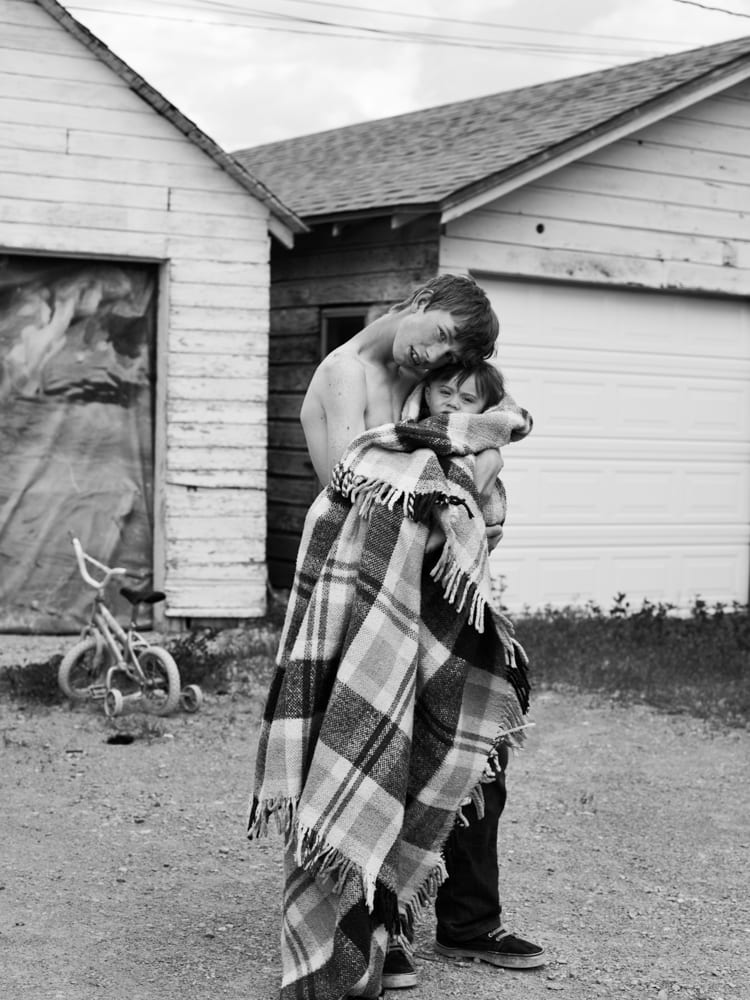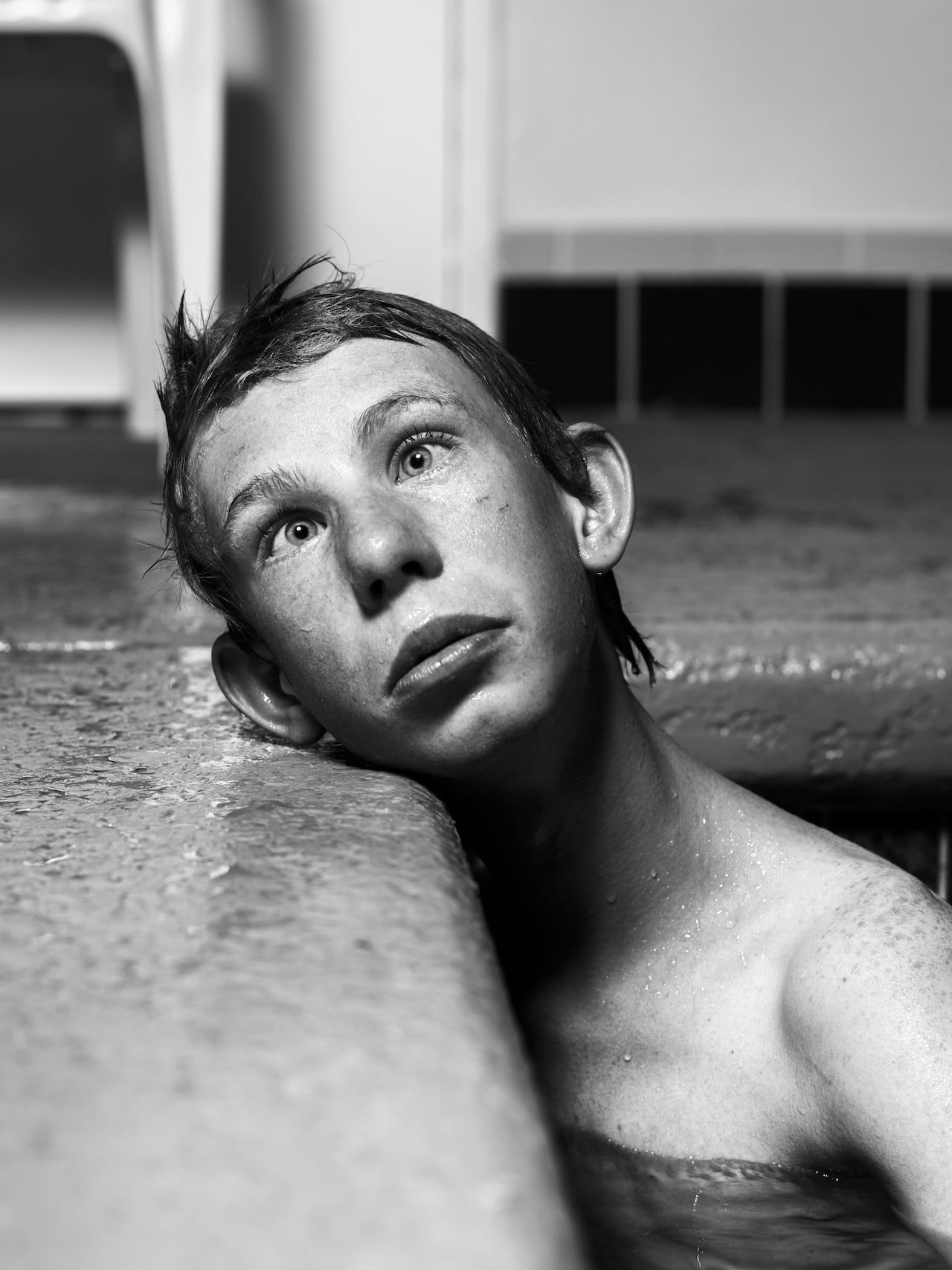Born in 1986, Robin de Puy grew up in her parents’ family hotel in the small village of Oude-Tonge, South Holland. She graduated from the Fotoacademie Rotterdam in 2009, and won the Photo Academy Award the same year. In 2013, she received the Dutch Photographic Portrait Prize for a shot of fellow photographer An-Sofie Kesteleyn; in 2015 she took a 10,000km road trip across the US on a Harley Davidson, making images that she published as the book If This Is True, I’ll Never Have to Leave Home Again in 2016, and exhibited in the Fotomuseum The Hague. de Puy is now based in Amsterdam and New York City, and working for titles such as New York, Bloomberg Business Week, ELLE, L’Officiel, and De Volkskrant. She predominantly shoots portraits.
Her new series, Randy, started on her 2015 roadtrip when she spotted the teen in Ely, Nevada. He rode past her and she asked if she could take his photograph; back home in The Netherlands, she found he stuck in her mind, and returned to see him at the end of 2016, in February 2017, and in May 2017, making “hundreds” of portraits. An exhibition of this work, which includes photographs and videos, is on show at the Bonnefantenmuseum in Maastricht from 26 January-13 May; Hannibal also recently published the series as a photobook.
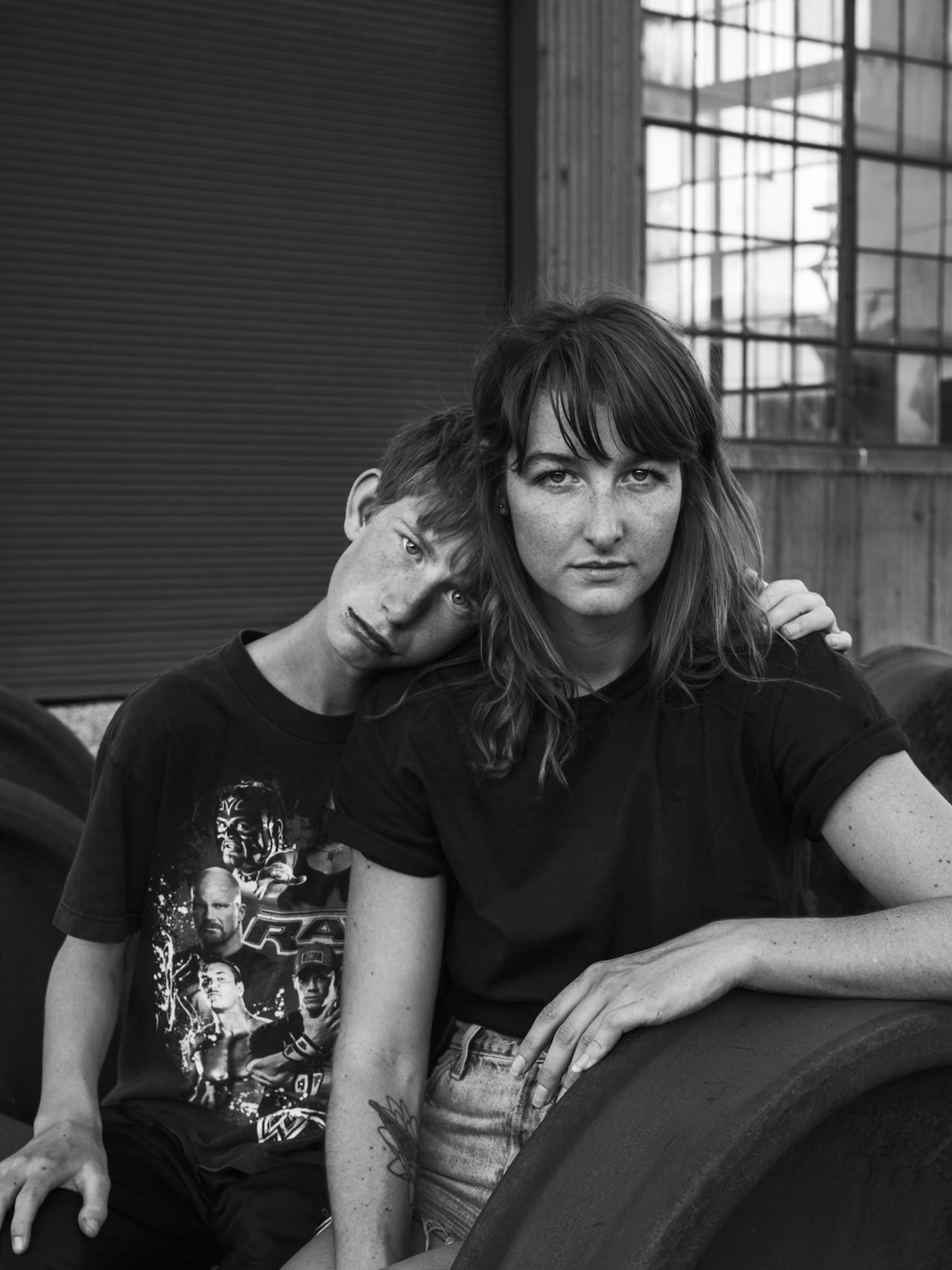
BJP: How did you get into photography in the first place?
Robin de Puy: I have dealt with anxiety all my life. In addition, I also feel tremendous curiosity about the ‘rest of the world’. Those two did not seem to go together until I started photographing. Taking a picture literally requires you to shift your focus to the other person. The desire to portray someone, to capture ‘something’, to be able to share it with anyone who wants to watch – that will almost always be bigger than any anxiety.
BJP: What was it that drew you to portrait photography?
RdP: My enormous fascination for some, and at the same time the search for recognition.
BJP: What makes a good portrait photograph?
RdP: I think a good portrait says a lot more about the photographer than about the person portrayed. The subject / person you choose to photograph, the place where you position someone, the moment you capture, the selection, the editing, the use of light – all of these are choices of the photographer. I think we are all (unconsciously) searching for recognition, for something we know, something about ourselves – I think that is having ‘your own style’ within the medium; the reflection of the photographer can be seen in the work.
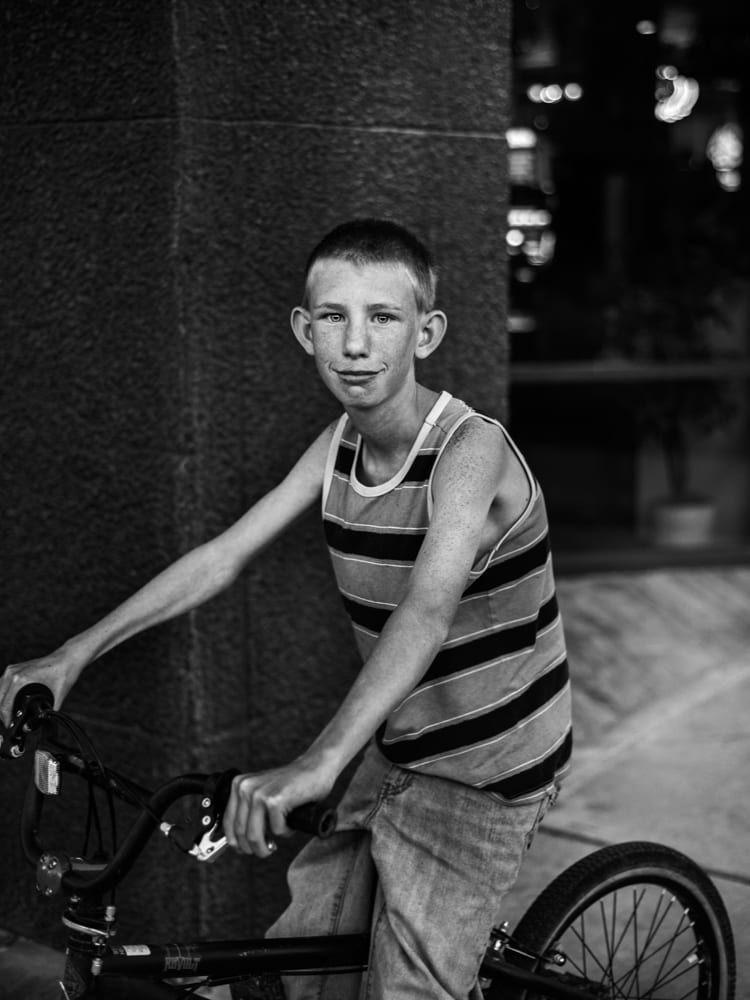
BJP: How does shooting personal work differ to your commissioned work?
RdP: The biggest difference is that in my commercial work there is a certain expectation of the client that sometimes does not completely match up with what I’m looking for in a portrait. Of course it is a challenge to stay as close as possible to your personal work, but sooner or later you have to compromise (the choice of the model, the emotion you are looking for, the location, etc).
BJP: Is it very different to take a portrait of someone famous?
RdP: The challenge for me is to create an image that – hopefully – shows something we have not seen from that person before. It is a different way of working. People not used to being in the spotlight often attach great importance to the moment the photo is taken and are not very concerned with the end result. Prominent or famous people are very concerned with how they come across and thus with the end result, and that can sometimes be limiting in the creative process.
BJP: It seems that you’re focusing more and more on black-and-white photography, is that right? If so, why?
RdP: Yes that’s right. I’m always searching for simplicity in the image. I assume a form, structure and emotion. I take away everything distracting. Colour often distracts and does not always add something.
BJP: When did you learn to ride a Harley? How cool!
RdP: I got my motorcycle licence at the age of 21. I used to ride a black and pink racer – quite camp! It was nice to start with, but eventually I got bored of it. When I decided to ride 12,000 km through America I really wanted to do it on the bike and yeah …. a Harley is the best fit for America, because almost every city has a Harley dealer.
BJP: What was it that struck you about Randy? I read that he didn’t communicate with anyone for eight years – it’s striking that you spotted such an unusual person just by seeing him.
RdP: It is almost always a gut feeling. I can’t explain why some people fascinate me so much. What I have learned is that they are often people that I feel comfortable with because – here it is again – I recognise something in them. I think that is something that is human in itself: looking for safety, for recognition. If the trust is mutual you make beautiful images. Someone can and may feel insecure, angry or sad. As long as they are not trying to hide that, and feel the freedom to express it, you can create something beautiful. I hope I can offer that space during the shoots.
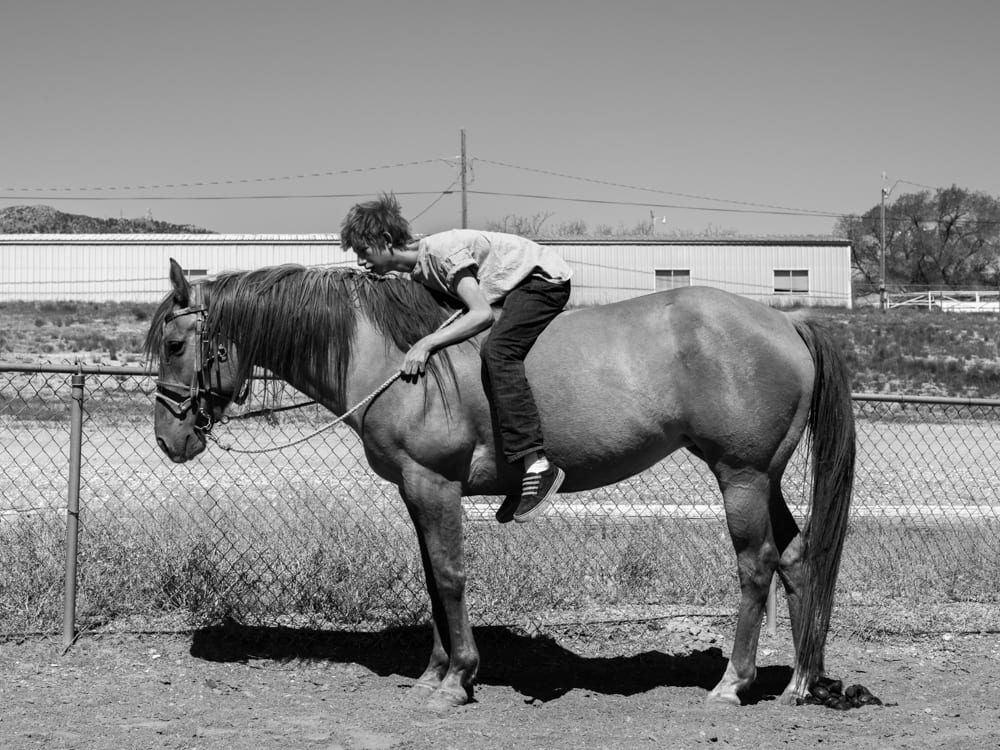
BJP: Did you have to get permission from Randy’s family to photograph him?
RdP: Of course – when I photographed Randy for the first time he was 15 years old. That first photo is also in my first book. Before I photograph someone – young or old – I want him or her to realise that many others will also see them. At a certain moment the photograph may start to live its own life. Many people do not realise that at the time the photo is taken.
BJP: How did your relationship with Randy and his family develop?
RdP: Both Randy and his family gave virtually no limit. For me as a photographer, that means that responsibility lies with me. Where do I draw the line? What do I show and what not? That they trusted me in this way is a great gift, and actually the only way to be able do a project like this. I asked Randy’s mother why she allowed me to get so close; her answer was ‘because he deserves it’. It is a form of love.
BJP: Is it unusual to be able to photograph a young person for so long?
RdP: Yes, when you think about it like that it is obviously a bit crazy. Yet I think that this fascination with my subject is necessary to make this work. In this case it is Randy, but my previous project, for example, was about my old uncle in Denmark. The fascination for a particular person is not focused on age, race, gender. People that do not fit in very well – on the outside or the inside – and the individuality that comes along with that is often an important part for me. Not fitting in can sometimes be elusively beautiful.
The world can be so loud. So many opinions, a lot of judgment. I – and I think many with me – have quite a need for Randy. Randy has been dancing my mind for the past three years and it was therefore impossible not to share it with whoever wants to watch – the simplicity, playfulness, sobriety, but also sensitivity, individuality; all sides of Randy that I admire immensely, and which I attempt to show in the exhibition and my new book.
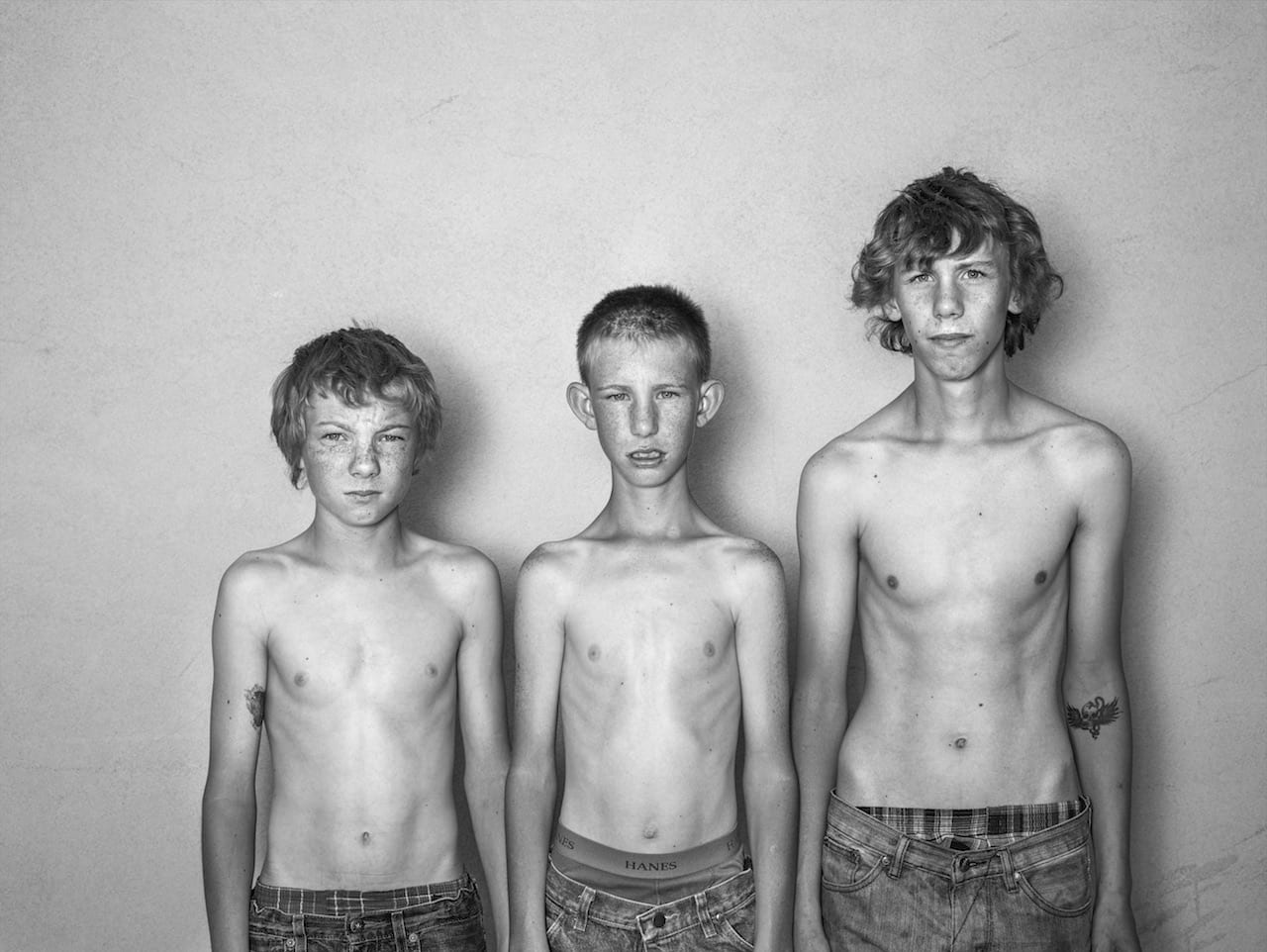
BJP: How many photographs did you take of him?
RdP: Hundreds.
BJP: Could you describe a typical session with him?
RdP: Early on Randy really got into it. Every morning he would send me a message to ask me what the plan was for that day, and if I was already on my way. I was in Nevada with my boyfriend/cameraman Maarten (we also shot videos of Randy) and sometimes we spent one day in Ely and the next on the road. Listening to music, swimming, playing videogames, visiting Randy at school. We were often ‘just’ spending time with him and occasionally we shot or filmed something.
BJP: Was it just a case of hanging out?
RdP: Yes!
BJP: The idea of the great American road trip is quite well established – but it’s usually undertaken by men. Do you think being a woman made any difference?
RdP: I think a woman photographs differently from a man. In addition a woman travelling by herself on a motorcycle through America stands out more than a man would. Many people asked if it was scary to do this on my own, as a woman. The opposite was true – everyone wanted to teach me things, help me, listen to me, cooperate with me. Trust was often established very quickly; being a woman certainly helped with that. I felt safe during the the whole trip. Actually, travelling alone means you are much more focused on your surroundings, you become very perceptive. If something does not feel okay, you can always just leave.
There were a few situations that people consider to be unsafe. For example, I was at a motel where I wanted to take a self-portrait. I was standing in front of a group of workers half naked, they also had to take off their shirts. Physically they were stronger, yet I was in charge. I was very focused, but I also kept them focused. The camera and the way you are communicating gives a lot of power over the situation and enforces a certain respect. The men were so surprised by my idea they all cooperated well, and also corrected each other when someone made a comment.
That did not mean I was not afraid – I thought it was rather scary but I also shared that with them. They were also scared at a certain moment. They were whispering to each other and I wanted to know what they were saying because well…I was about to stand in front of them half naked, I would prefer no whispering. Then they were stuttering that they were afraid that I would steal from them. That made me laugh out loud, which in turn made them laugh. I wrote a little piece about this, titled White Boy: https://www.robindepuy.nl/words
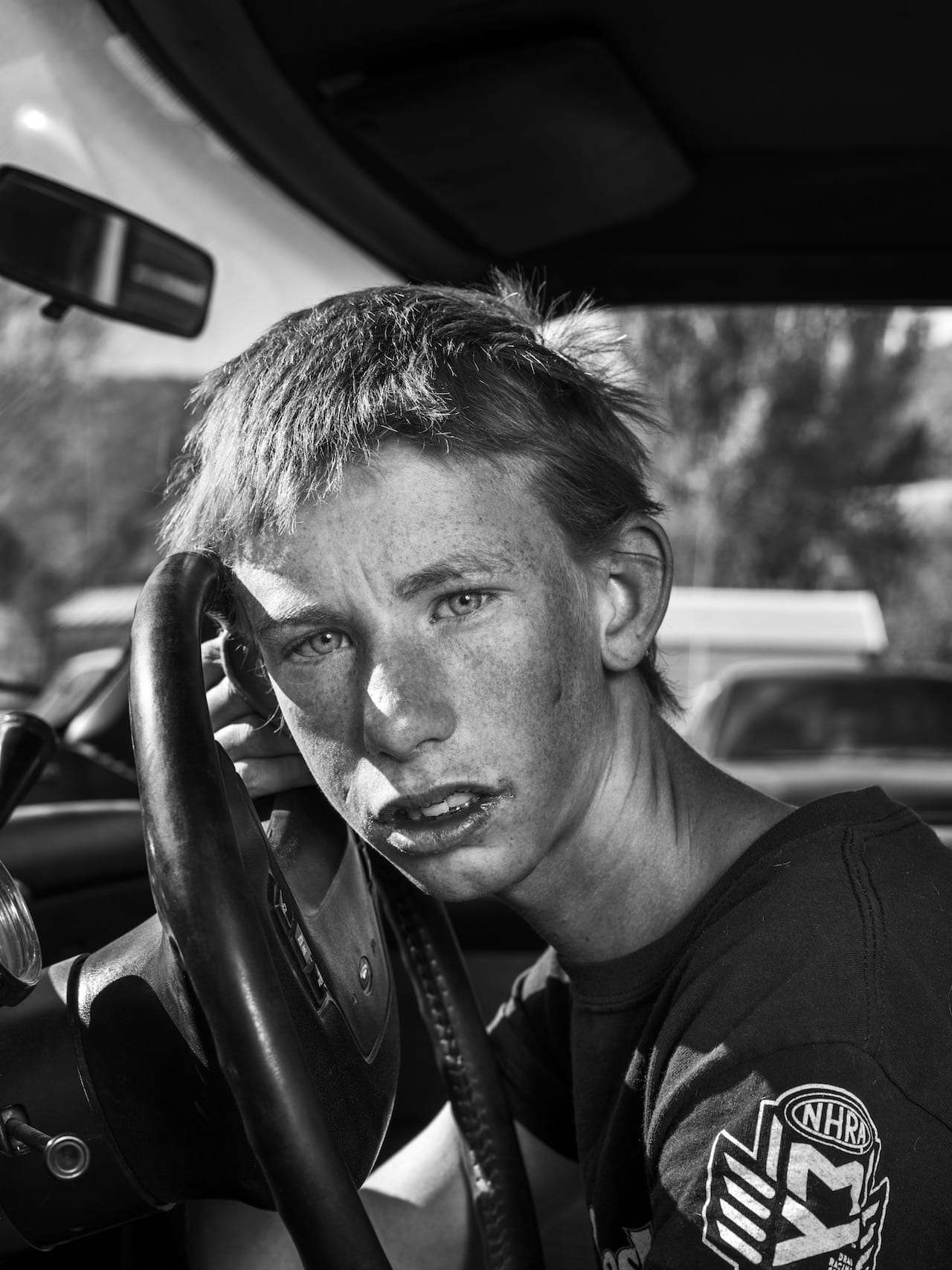
BJP: Do you think that, as a woman, you were able to get some images that would be harder to take as a man?
RdP: I do think that being a woman was important in my relationship with Randy. I was (and am) a kind of mother/big sister figure to him. Maarten was also there and he too formed a close bond with him, but I think that Randy is more inclined to feel safe with a woman. Perhaps I had a small headstart being a woman.
BJP: Are you still in touch with Randy?
RdP: Yes, we speak several times a week. He has seen the exhibition and book – albeit via our phonecalls – and he mostly thinks it is very COOL. It is also nice to be able to show him every time something happens with the work, and how people respond to it.
RdP: Do you see your work with him continuing in future?
RdP: Perhaps. Maybe not. I don’t know. His graduation is in June, and I’m going to see him then. Randy sees me as family, and also assumes that I will come back soon. “If you’re in the area, will you stop by?” He has no idea of the concept of ‘the world’ and how far we live from eachother. I have told him several times that I have to take two flights in order to get near to him, but he doesn’t really get it. I would like to photograph Randy in 20 years and then make a part two.
BJP: Are there photographers whose work you admire? If so who, and why?
RdP: There are many photographers I admire. Of course there are the well-known, such as Richard Avedon, Mary Ellen Mark, Vivian Maier. But sometimes a single image by an unknown photographer can also affect me enormously. Sometimes I do not find the whole oeuvre very interesting, but only a certain image. Or sometimes the work does not appeal to me very much, but the story behind it does. In short: there is much to admire.
Randy is on show at the Bonnefantenmuseum, Maastricht, The Netherlands from 26 January-13 May www.bonnefanten.nl Randy by Robin de Puy is published by Hannibal, priced €39.95 www.uitgeverijkannibaal.be https://www.robindepuy.nl/
